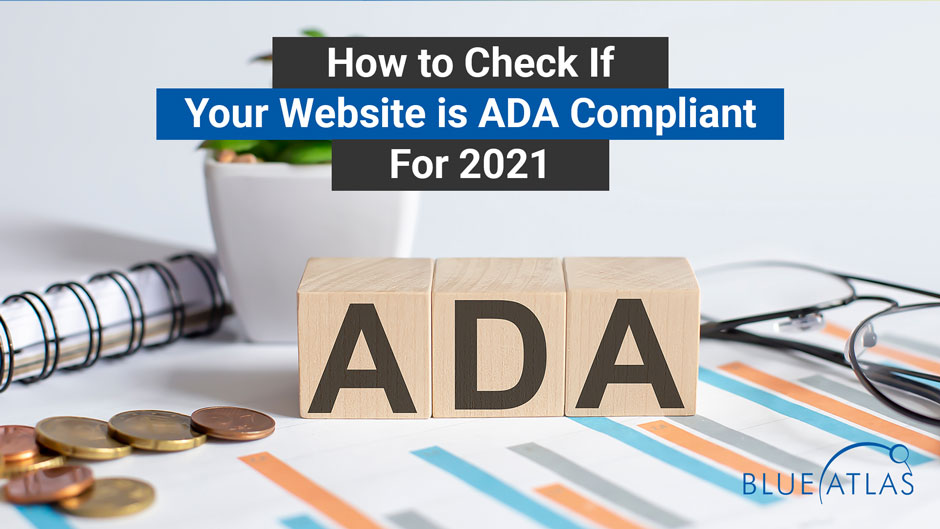The ADA, or Americans with Disabilities Act, is periodically updated with new guidelines and practices for today’s work – so it’s not a surprise that the ADA has a variety of website accessibility standards and requirements. This is primarily done via the WCAG, or Web Content Accessibility Guidelines, created and maintained to apply accessibility rules to the online world.
Meeting these requirements opens your website up to a wider variety of people with more accessibility options for every customer, from those with poor eyesight to those who may need to use alternative keyboards for navigation. For public entities or government websites, complying with the ADA compliance standards also helps avoid lawsuits and similar difficulties. If you haven’t given much thought to meeting website accessibility requirements for your site, here’s where to begin.
Use an Auditing Tool to Create Your To-Do List
ADA guidelines can take time to fully research and understand, especially since they can apply to a wide range of disabilities and use cases. That’s why an automated audit with an app is one of the easiest methods for organizations looking at ADA compliance. These tools scan websites for significant ADA issues and report back with a list of problems, errors, and an overall score that makes for an excellent starting place.
There are several automated auditing tools with varying levels of success. Our preferred choice is accessiBe, which tests for hundreds of specific ADA issues and allows a website to start with a simple free URL scan to see where things stand. The service can also provide ongoing help and recommendations for what to fix. This is an ideal step for organizations that have relatively simple websites that have never been checked for ADA compliance or haven’t been reviewed for compliance in years despite a number of website changes.
For larger, more complex websites, a manual audit that goes through the WCAG step by step can also be an effective choice for providing the most data on compliance. This typically means connecting with a professional auditor experienced with WCAG guidelines.
Follow the POUR Guidelines for ADA Compliance Standards
The WCAG is filled with detailed documentation and is continually updated to reflect new technology and new online approaches to accessibility. However, for organizations beginning to work on compliance, it narrows everything down to four specific rules that websites should follow, the POUR guidelines. These rules make it easy to form actionable plans and incorporate accessibility into any planned website changes:
Perceivable: Perceivable means that information needs to be available to users in a way they can perceive – in other words, that website content is present for a variety of senses and users. That includes basic things like text descriptions for images (which help blind people using reading bots), captions, options for audio versions of content, and more. Essentially, content should never be invisible to someone because of a disability or other condition.
Operable: The user interface and navigation of a website should always be operable. There should be a way for users to get around even if they may not be able to perform specific kinds of actions. That includes compatibility with keyboard-only setups, clear and simple navigation, and avoiding gimmicks or timed sessions that prevent people from reading directions and using tools after a certain period of time.
Understandable: Understandable refers to how effectively information is communicated, especially regarding web design. Text should always be readable, clear, and easy to understand, especially regarding instructions. Web menus and tools should likewise be easy to learn and use for all visitors, with no confusing directions. If users make mistakes, tools should be able to help them understand what needs to be done next.
Robust: Robust essentially means that website content can be accessed by any assistive technologies that users may be depending on to access that content. This metric is a bit more technical but focuses on ensuring that text and graphics are compatible with current assistive apps and tools.
If you are making any plans or changes for accessibility, always refer back to these guidelines. It’s an easy way to stay ADA compliant in an evolving situation.
Create a Plan for ADA Compliance Optimization Long-Term
Using an audit and the POUR guidelines, organizations can form plans for optimizing their websites for accessibility and avoiding ADA concerns (sometimes called ADA remediation). Blue Atlas Marketing will be happy to consult with you if your organization isn’t sure what kind of website changes to make for ADA compliance. We can give you recommendations on actionable steps to take for your web development and the ADA standards for accessible design. Having a plan in place is important to roll out necessary changes!
Avoid Restricting Content or Functionality Whenever Possible
As a general rule going forward, avoid ADA “solutions” that restrict content from users or cover over core issues instead of fixing them. For example, some add-ons can be installed on a website that provides an alternative mode for accessibility, but these responses tend to be clunky, are not always reliable, and do not protect the site from liability. The same is often true of providing a different website version that cuts out content to make it more accessible.
Remember, a core part of the ADA is “full and equal enjoyment.” It’s generally better to make permanent changes to your website that fix current issues instead of leaving them in place.
Final Note
The WCAG continues to evolve, but that’s good news for ADA compliance, as more efficient accessibility options are always being developed. If it’s been years since your website was audited for accessibility, we advise you to check and see if your organization needs to take new steps!






